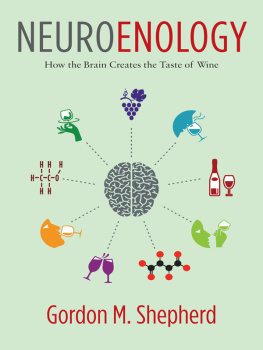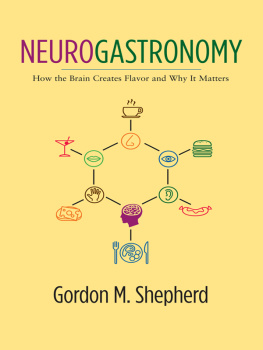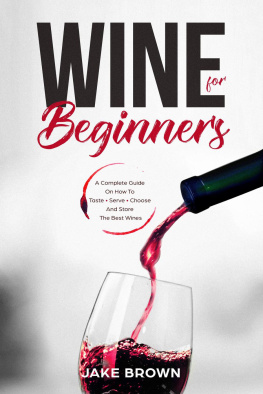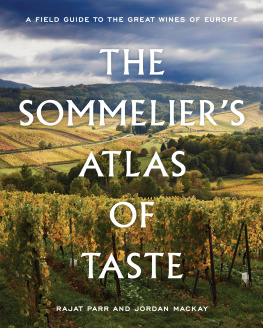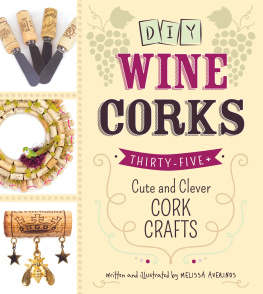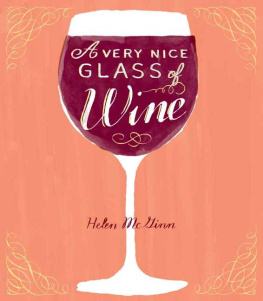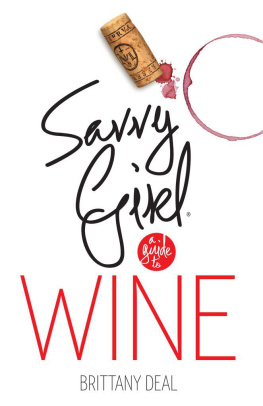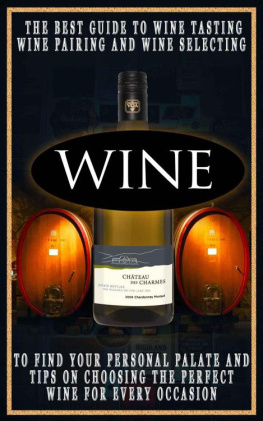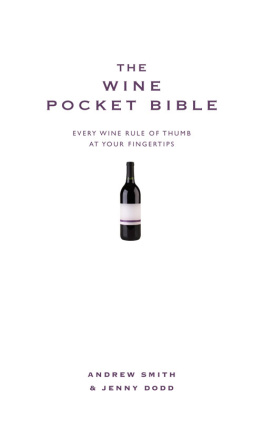Table of Contents
NEUROENOLOGY
NEUROENOLOGY
How the Brain Creates the Taste of Wine
Gordon M. Shepherd
COLUMBIA UNIVERSITY PRESS
NEW YORK
Columbia University Press
Publishers Since 1893
New York Chichester, West Sussex
cup.columbia.edu
Copyright 2017 Gordon M. Shepherd
All rights reserved
E-ISBN 978-0-231-54287-6
Library of Congress Cataloging-in-Publication Data
Names: Shepherd, Gordon M., 1933 author.
Title: Neuroenology : how the brain creates the taste of wine / Gordon M. Shepherd.
Description: New York : Columbia University Press, [2017] | Includes bibliographical references and index.
Identifiers: LCCN 2016021877 (print) | LCCN 2016023079 (e-book) | ISBN 9780231177009 (cloth : alk. paper) | ISBN 9780231542876 (e-book)
Subjects: LCSH: Wine tasting. | FoodSensory evaluation.
Classification: LCC TP548.5.A5 S54 2017 (print) | LCC TP548.5.A5 (e-book) | DDC 641.2/2dc23
LC record available at https://lccn.loc.gov/2016021877
A Columbia University Press E-book.
CUP would be pleased to hear about your reading experience with this e-book at .
COVER IMAGES: iStockphoto and Shutterstock
COVER DESIGN: Milenda Nan Ok Lee
To Grethe
Contents
This book builds on the principles I presented in Neurogastronomy: How the Brain Creates Flavor and Why It Matters (2012). It is to some extent a modern update of Anthelme Brillat-Savarins classic, The Physiology of Taste (1825). There is finally enough experimental and theoretical physiology to begin to answer some of the questions raised in that treatise, and the taste of wine serves as an excellent example.
I have many to thank for assistance in this endeavor, including my editor Patrick Fitzgerald, aided by my colleague Stuart Firestein, of Columbia University. In Neurogastronomy, I devoted much of a chapter to how the brain creates the taste of wine, but it only whetted their appetite for more. Patrick quietly but persistently urged me to expand it into a book. We agreed that it would not be a traditional wine book with a focus on the wine; rather, it would be on an entirely new subject: how the brain creates the taste of wine, based on principles that would apply to all wines. As will be seen, the take-home message is: the taste is not in the wine; the taste is created by the brain.
A key role in this book has been played by my wife, Grethe, who over the years has organized visits with many friends in Paris and elsewhere in France. In my interactions with neuroscience colleagues there I became a friend of Jean Didier-Vincent, of the Universities of Bordeaux and Paris, a leading gourmet and wine expert. In 2000, he invited me to participate in Du Vin (On Wine), an episode of his radio program on science, through which I met Jean-Franois Moueix, the owner of Petrus, the worlds most expensive wine, and his chief wine taster, the renowned Jean-Claude Berrouet. Jean-Claude kindly agreed to give me a personal wine tasting to test my theories on how the brain creates the perception of flavor, which stimulated me to begin thinking about writing this book. Notes I made from this special tasting are in the appendix.
One of the principles I have followed in writing Neurogastronomy and now Neuroenology is to build on my laboratory experiments on the sense of smell. For this I draw on a vast literature in biomedical science, a literature that is revolutionizing our knowledge of the mechanisms underlying normal and abnormal brain function. There is much in this literature that gives insight into the dominant role of smell and the roles of the other senses in creating our perception of flavor, but little of it has yet entered the mainstream of writings on the flavor of food or the flavor of wine. In addition, there is little on the motor control and muscle side of wine tasting, which is crucial to moving the wine through our mouth and the volatiles through our airways.
The challenge in this book is to make these scientific advances interesting and relevant to the experience of wine tasting. I only hope I can impart a little of the sense of excitement that I and my colleagues feel in our scientific studies. All failings and errors in this attempt are entirely mine. Wendolyn Hill has again converted my sketches into elegant illustrations. Pamela Nelson, Ryan Groendyk, Irene Pavitt, and Milenda Lee have provided wonderful support in bringing the manuscript through production.
I have benefited from collaborations with and advice from many colleagues. They include flavor experts Dana Small, Ivan de Araujo, Justus Verhagen, and Barry Green at the John B. Pierce Laboratory and Yale University; Gary Beauchamp, Marci Pelchat, and Julie Menella of the Monell Chemical Senses Center in Philadelphia; Terry Acree, Cornell University; Chris Loss, Culinary Institute of America; Harvard anthropologists Richard Wrangham and Dan Lieberman; paleontologist Timothy Rowe of the University of Texas, Austin; Pierre-Marie Lledo, Pasteur Institute; Gordon M. G. Shepherd, Northwestern University; Ole Mouritsen, University of Southern Denmark; Marina Bentivoglio, University of Verona; Marta Dizy Soto, University of Rioja; and Anna Menini, International School for Advanced Studies, Trieste.
For my education in wine tasting Im especially grateful, in addition to Jean-Didier and Jean-Claude, at various times over the years to Ann Noble at the University of California, Davis; Sandrine Garbay, Chteau dYquem; Albert Scicluna, Le Rouge et le Verre, Paris; Christian Margot, Firminich, and Marilisa Allegrini of Allegrini Estates, Verona. Special thanks to Marilisa and to Giorgio, Antonio, and Simonetta Gioco of 12 Apostolis, Verona, for my own Valpolicella wine label. Grethe and I are grateful for a recent invitation from Daniel Baron to join Jean-Claude at the launch of a new Twomey Cellars wine at Charlie Palmers in New York.
In my current research, I am grateful to my colleagues Michael Hines, Tom Morse, Michele Migliore, Ted Carnevale, Robert McDougal, Perry Miller, Rixin Wang, and Luis Marenco for our studies in modeling sensory processing in the olfactory pathway; to Justus Verhagen and his colleagues Shri Gautam, Michelle Rebello, and Shaina Short for our studies of ortho- and retronasal olfaction in rodents; and to Fahmeed Hyder and his colleagues Basav Sanganahalli and Peter Herman for our functional imaging studies of odor maps. Pasko Rakic and Pietro De Camilli have provided unstinting support as my department chairs. I am indebted to colleague Daeyeol Lee for many stimulating conversations in systems neuroscience. Charles Greer is a longtime colleague and source of much support and wisdom.
Our research is supported by the National Institute for Deafness and Other Communicative Disorders within the National Institutes of Health, with special thanks to Barry Jacobs over the years, and Susan Sullivan. There is much current interest in neuroscience in complete descriptions of brain systems underlying behavior, from molecules to behavior, an effort termed systems biology. The human brain flavor system described in Neurogastronomy and this book clearly illustrates this concept.

